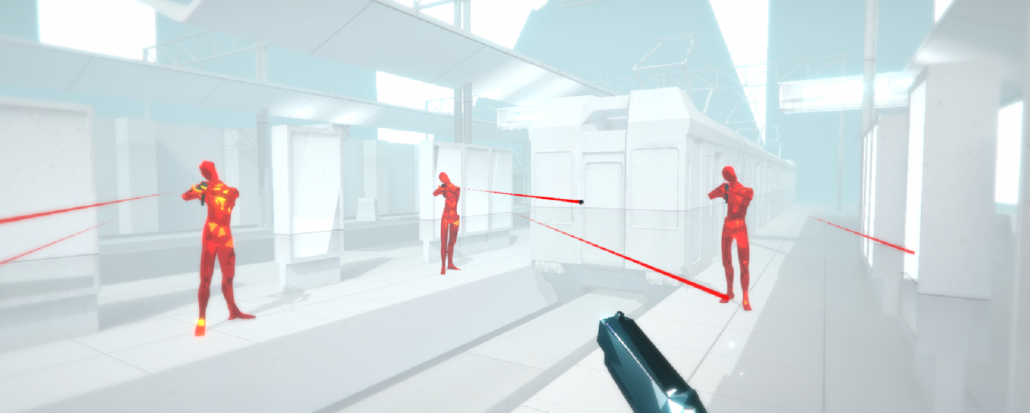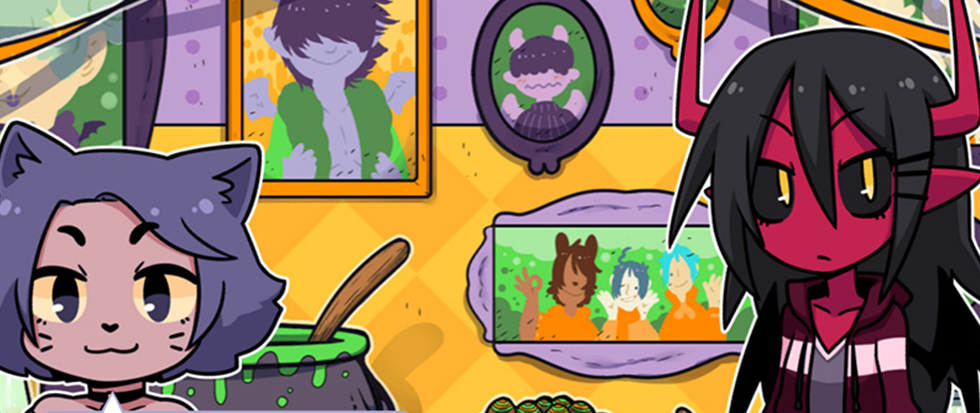
Getting Hot Under The Collar with Superhot: The Card Game
First-person shooters are often frenzied affairs, with bullets-dodging and gun-slinging becoming a dazzling display of agility and Olympian reflexes. But by dramatically slowing down its bullets’ projectile motion into a deliberate crawl, the nail-biting shooter Superhot turns this convention on its head, forcing you to slow dance your way through a deluge of bullets and assailants. Rather than diminishing its intensity, this transforms Superhot into an adrenaline-fuelled experience. Time your moves right, and watch yourself sail through scenarios that would usually be impossible to get away from unscathed in other shooters.
Given the game’s primary conceit of time moving only when the player does, Superhot feels like it will translate well into a tabletop game, with replicating Superhot’s central mechanics of letting players pause and parse their next move a natural fit. So when a card game adaptation was announced last year, I jumped at the opportunity to own a copy. Thematically, Superhot: The Card Game doesn’t stray too far from its digital counterpart. However, time—as relative to the game—feels like it’s creeping by even more slowly in this iteration. It throttles the Superhot experience by stretching every action you would make in the videogame into minutes. While it’s definitely a faithful and inventive adaptation in spirit, it’s a pity the card game doesn’t reach the dizzying heights of the original.
Much like solitaire games, the crux of Superhot: The Card Game lies in solo play, although it can accommodate multiple players. A rotating line of obstacles, ranging from red polygon figures to environments and objects, represents your field of vision. The more actions you make in one turn, including choosing to take out an enemy or dodge an attack, the more this line changes and shifts. In later phases, bullets will also occupy spaces in this line, and if you can’t deal with them swiftly, they’ll soon make their way into your hand. Absorb too many bullets, and you’ll lose. It’s a marvel how seamless the transition from digital to cardboard is, and I can almost envision the scenes from Superhot playing out before my eyes.

Throwing a spanner into the works, however, are mission cards, which state longer-term goals you must complete to win. These are nifty little additions to prevent Superhot: The Card Game from going stale quickly, but they range from playable to dreadfully punishing, especially towards the end when torrents of bullets are already surging towards you. Tough luck if you draw a particularly difficult mission card in the first turn, like having to dodge a fixed number of bullets in your line of sight. Since bullets don’t usually appear that frequently earlier, one counter-intuitive suggestion is to consider letting bullets get close to you on purpose, which is a bad idea in any reality, be it cardboard or daily life. Eventually some rounds become an exercise in patience, while others are completed way too easily. Moreover, this adds little to the transient, temporal qualities of Superhot.
What makes Superhot stand out as a videogame are its self-referential nods to—and embrace of—its digital nature, sealing the title as a super hot favorite among many videogame aficionados. And as its virtual reality adaptation, Superhot VR further immerses the player within its idiosyncrasies, even tempting the player to completely surrender themselves into the digital realm by blurring the line between its virtual and more natural-looking environments. To put it simply, you may feel like you never need to remove your VR helmet. On the other hand, Superhot: The Card Game doesn’t get quite as meta—a sorely missed opportunity—but playing it is dependent on your experiences of the Superhot videogame; card game players unaware of its background may find it a little incomprehensible. The card game does make much more sense if you’ve played the original title before. Nonetheless, it still stands as a novel idea for fans of the videogame, offering them another means of experiencing the temporal wizardry of Superhot.





